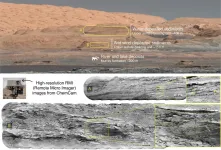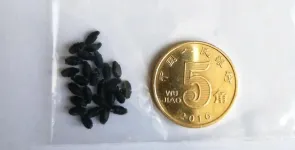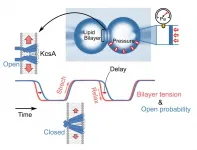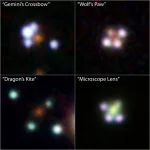Scientists discover 'jumping' genes that can protect against blood cancers
2021-04-08
(Press-News.org) DALLAS - April 8, 2021 - New research has uncovered a surprising role for so-called "jumping" genes that are a source of genetic mutations responsible for a number of human diseases. In the new study from Children's Medical Center Research Institute at UT Southwestern (CRI), scientists made the unexpected discovery that these DNA sequences, also known as transposons, can protect against certain blood cancers.
These findings, published in Nature Genetics, led scientists to identify a new biomarker that could help predict how patients will respond to cancer therapies and find new therapeutic targets for acute myeloid leukemia (AML), the deadliest type of blood cancer in adults and children.
Transposons are DNA sequences that can move, or jump, from one location in the genome to another when activated. Though many different classes of transposons exist, scientists in the Xu laboratory focused on a type known as long interspersed element-1 (L1) retrotransposons. L1 sequences work by copying and then pasting themselves into different locations in the genome, which often leads to mutations that can cause diseases such as cancer. Nearly half of all cancers contain mutations caused by L1 insertion into other genes, particularly lung, colorectal, and head-and-neck cancers. The incidence of L1 mutations in blood cancers such as AML is extremely low, but the reasons why are poorly understood.
When researchers screened human AML cells to identify genes essential for cancer cell survival, they found MPP8, a known regulator of L1, to be selectively required by AML cells. Curious to understand the underlying basis of this connection, scientists in the Xu lab studied how L1 sequences were regulated in human and mouse leukemia cells. They made two key discoveries. The first was that MPP8 blocked the copying of L1 sequences in the cells that initiate AML. The second was that when the activity of L1 was turned on, it could impair the growth or survival of AML cells.
"Our initial finding was a surprise because it's been long thought that activated transposons promote cancer development by generating genetic mutations. We found it was the opposite for blood cancers, and that decreased L1 activity was associated with worse clinical outcomes and therapy resistance in patients," says Jian Xu, Ph.D., associate professor in CRI and senior author of the study.
MPP8 thus suppressed L1 in order to safeguard the cancer cell genome and allow AML-initiating cells to survive and proliferate. Cancer cells, just like healthy cells, need to maintain a stable genome to replicate. Too many mutations, like those created by L1 activity, can impair the replication of cancer cells. Researchers found L1 activation led to genome instability, which in turn activated a DNA damage response that triggered cell death or eliminated the cell's ability to replicate itself. Xu believes this discovery may provide a mechanistic explanation for the unusual sensitivity of myeloid leukemia cells to DNA damage-inducing therapies that are currently used to treat patients.
"Our discovery that L1 activation can suppress the survival of certain blood cancers opens up the possibility of using it as a prognostic biomarker, and possibly leveraging its activity to target cancer cells without affecting normal cells," says Xu.
INFORMATION:
Xu is an associate professor of pediatrics at UT Southwestern and a Cancer Prevention and Research Institute of Texas (CPRIT) Scholar in Cancer Research. Lead authors from the Xu lab include Zhimin Gu and Yuxuan Liu. Other collaborators include John Abrams and Alec Zhang from UT Southwestern, and Wenfeng An from South Dakota State University.
This work was supported by the National Institutes of Health (R01CA230631 and R01DK111430), CPRIT (RR140025, RP180504, RP180826 and RP190417), a Leukemia & Lymphoma Society Scholar award, an American Society of Hematology Scholar award, a Leukemia Texas Foundation research award, a Welch Foundation grant (I-1942), and donors to the Children's Medical Center Foundation.
About CRI
Children's Medical Center Research Institute at UT Southwestern (CRI) is a joint venture of UT Southwestern Medical Center and Children's Medical Center Dallas, the flagship hospital of Children's Health. CRI's mission is to perform transformative biomedical research to better understand the biological basis of disease. Located in Dallas, Texas, CRI is home to interdisciplinary groups of scientists and physicians pursuing research at the interface of regenerative medicine, cancer biology and metabolism. For more information, visit: END
[Attachments] See images for this press release:
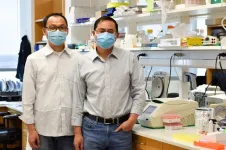
ELSE PRESS RELEASES FROM THIS DATE:
2021-04-08
Every third-grader knows that plants absorb nutrients from the soil through their roots. The fact that they also release substances into the soil is probably less well known. And this seems to make the lives of plants a lot easier.
That is at least the conclusion of the current study. The participating researchers studied several maize varieties that differ significantly in their yield. In their search for the cause, they came across an enzyme, flavone synthase 2. "The high-yield inbred line 787 we studied contains large amounts of this enzyme in its roots", explains Dr. Peng Yu ...
2021-04-08
A global science collaboration using data from NASA's Neutron star Interior Composition Explorer (NICER) telescope on the International Space Station has discovered X-ray surges accompanying radio bursts from the pulsar in the Crab Nebula. The finding shows that these bursts, called giant radio pulses, release far more energy than previously suspected.
A pulsar is a type of rapidly spinning neutron star, the crushed, city-sized core of a star that exploded as a supernova. A young, isolated neutron star can spin dozens of times each second, and its whirling magnetic ...
2021-04-08
SALT LAKE CITY - A letter published today by Huntsman Cancer Institute (HCI) at the University of Utah (U of U) in the New England Journal of Medicine reports that melanoma mortality among Utahns outpaced that of the rest of the United States during the period from 1975 to 2013. Melanoma death rates have been decreasing in recent years both in Utah and the United States, a trend likely attributable to new, more effective treatments, like immunotherapy. However, melanoma remains the deadliest type of skin cancer, and the incidence of melanoma diagnoses in Utahns is higher than in any other ...
2021-04-08
LOS ALAMOS, N.M., April 8, 2021-While attention has been focused on the Perseverance rover that landed on Mars last month, its predecessor Curiosity continues to explore the base of Mount Sharp on the red planet and is still making discoveries. Research published today in the journal Geology shows that Mars had drier and wetter eras before drying up completely about 3 billion years ago.
"A primary goal of the Curiosity mission was to study the transition between the habitable environment of the past, to the dry and cold climate that Mars has now. These rock layers recorded that change in great detail," said Roger Wiens, a coauthor on the paper and scientist at Los Alamos National Laboratory, ...
2021-04-08
PHILADELPHIA (April 8, 2021) - Many factors, including need, affect healthcare use. Strategies geared to enhancing the provision and access to healthcare must consider the various mechanisms that contribute to healthcare need and use. Until now, the mechanism of violence and its impact on both health and healthcare use has not been investigated.
A new study from the University of Pennsylvania School of Nursing (Penn Nursing) is one of the first to examine the association between violence exposure and healthcare service utilization in Mexico. Results are published in the International Journal of Health Equity.
Widespread violence in Mexico can impact health through various channels. The study ...
2021-04-08
When it comes to choosing a partner, humans tend to be attracted by characteristics like personality and common interests. In contrast, insects tend to be a bit shallow, as they choose a mate based on appearance, and in some cases, smells. One example is the leaf beetle, which produces chemical pheromones that are on their cuticles, or the exterior surface of the beetle. They use these 'scents' to assess beetle sex and mating status (whether beetles are sexually mature or not).
Kari Segraves, professor of biology in the College of Arts and Sciences, is interested in researching the chemical and visual signals that contribute to mate selection by these beetles. This work is part of a larger project focused on understanding how new species are formed. By definition, species are related ...
2021-04-08
Ion channels play an indispensable role in cellular physiology, and understanding the physical features that affect ion channel functions is a matter of considerable interest to biologists. Given that mechanosensitivity is an intrinsic feature of cells, the complex set of mechanical stresses acting on a cell at any time represents an important consideration in the field of cellular physiology. In fact, stretching forces created by mechanical stress are sometimes necessary to activate ion channels. As Professor Masayuki Iwamoto and Professor Shigetoshi Oiki of the University of Fukui ...
2021-04-08
BIRMINGHAM, Ala. - Six years ago, Michael Niederweis, Ph.D., described the first toxin ever found for the deadly pathogen Mycobacterium tuberculosis. This toxin, tuberculosis necrotizing toxin, or TNT, became the founding member of a novel class of previously unrecognized toxins present in more than 600 bacterial and fungal species, as determined by protein sequence similarity. The toxin is released as M. tuberculosis bacteria survive and grow inside their human macrophage host, killing the macrophage and allowing the escape and spread of the bacteria.
For 132 years, ...
2021-04-08
With the help of machine-learning techniques, a team of astronomers has discovered a dozen quasars that have been warped by a naturally occurring cosmic "lens" and split into four similar images. Quasars are extremely luminous cores of distant galaxies that are powered by supermassive black holes.
Over the past four decades, astronomers had found about 50 of these "quadruply imaged quasars," or quads for short, which occur when the gravity of a massive galaxy that happens to sit in front of a quasar splits its single image into four. The latest study, which spanned only a year and a half, increases the number of known quads by about 25 percent and demonstrates the power of machine learning to assist ...
2021-04-08
Past surveys have shown that more than 80% of dog owners report observing jealous behaviors from their dogs--vocalizations, agitated behavior, pulling on a leash--when they give attention to other dogs. New research published in the journal Psychological Science supports these observations and finds that dogs also exhibit jealous behaviors when they merely imagine that their owner is interacting with a potential rival, in this case, a highly realistic artificial dog.
"Research has supported what many dog owners firmly believe--dogs exhibit jealous behavior when their human companion interacts with a potential rival," said Amalia Bastos with ...
LAST 30 PRESS RELEASES:
[Press-News.org] Scientists discover 'jumping' genes that can protect against blood cancers




